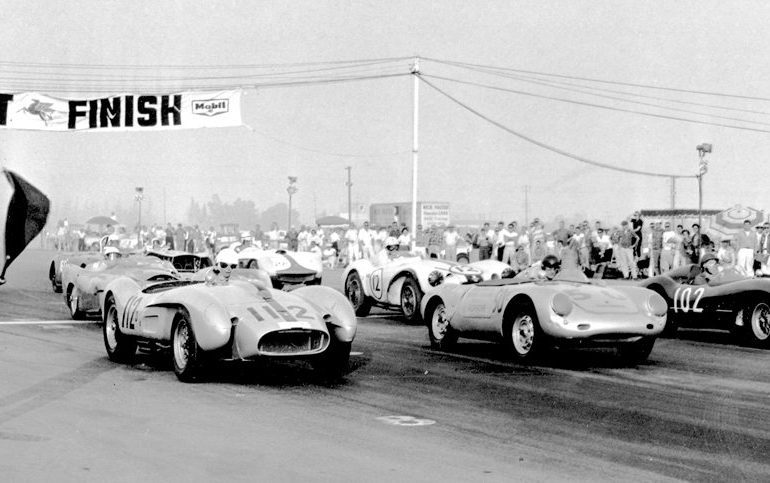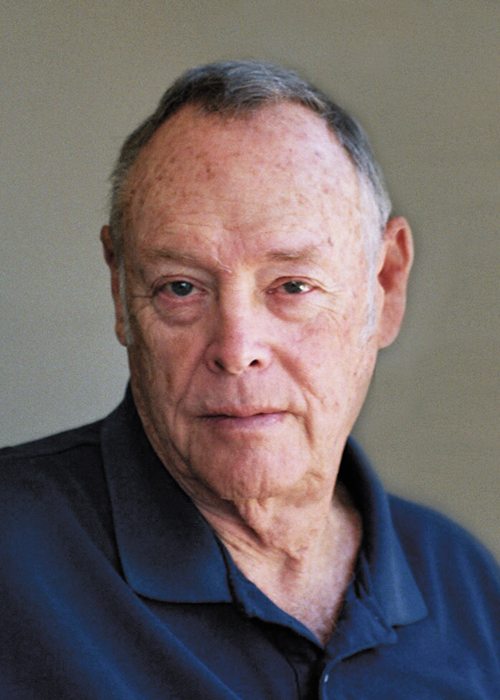
At the same time, Southern California became a hotbed of the car craze. Road racing developed as well as U.S.-style oval-track. A few local drivers went on to challenge the world’s best, among them Phil Hill and Dan Gurney, both of whom became famous. Another much less known driver joined them, Richie Ginther. Richie is now remembered, perhaps, only by those of us who were there then, but like Hill and Gurney, he had world-class talent.
Paul Richard Ginther was born in California in 1930. Like so many others, Ginther started road racing as an amateur in California. In those days, the premier event in the West was Pebble Beach, which Richie entered in 1951 at the wheel of an MG with a small-block Ford V-8-60 stuffed in. The first race on May 27 was the Del Monte Handicap, a 10-lap race. It was billed as a handicap because the smallest displacement cars started first, in this case a Crosley Hot Shot driven by Bill Devin’s brother, Gene. Soon, the faster cars began to pass. Phil Hill ended up winning in his own 1939 Alfa-Romeo Mille Miglia. Richie crossed the finish line just behind Phil, but the officials dropped him to 3rd due to an illegal pass.
Before he could race again, Richie was drafted and served for two years in the Air Force where he worked on aircraft engines. After being discharged, Ginther returned to his home in Santa Monica, renewing his friendship with Phil Hill. Hill drove Allen Guiberson’s 4.1 Ferrari in the Carrera Panamericana in 1953 and 1954, with Richie as navigator. In 1953, they crashed between Puebla and Mexico City, sliding off a 100-foot cliff bouncing end over end. Miraculously, both walked away. The following year, they placed 2nd overall to Umberto Maglioli in another Ferrari.
On February 6, 1955, Richie entered an Austin Healey owned by his car-dealer employer in the Singer Owners’ Club Hill Climb at Agoura, just north of the San Fernando Valley. I remember lining up behind him in my XK`120 Jaguar as we waited for a run. I know we had a short chat, but don’t recall the substance. Richie won the Stock Austin Healey class with a time of 29:66. (I was ignominious at 32:04, having arrived late, getting only one run and no practice.) Fastest time of the day was Frank Livingston in his Eliminator hot rod at 27:83.
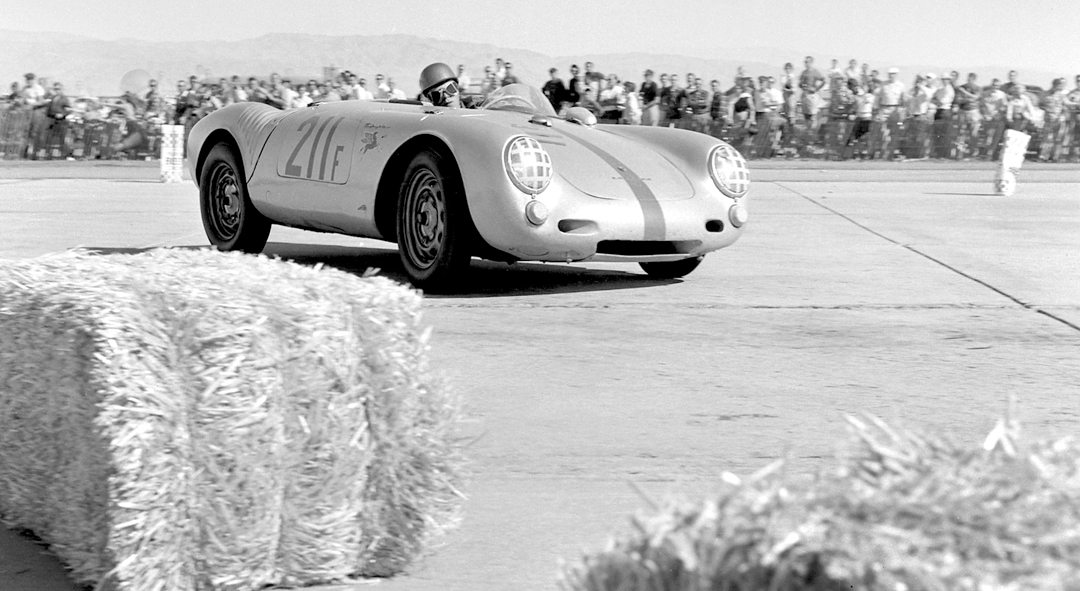
On May 1, 1955, Ginther entered a race at Minter Field near Bakersfield. It was an SCCA National put on by its Los Angeles Region. Richie placed 8th in the fourth race, the San Gabriel Trophy, that was supposed to be for drivers who had competed in three races during the previous year. Obviously, Richie had not. Later in the day, he placed 12th in the Healey.
Ginther and Phil Hill were not only friends, but also neighbors in Santa Monica. “When I was in high school, I’d go over to Phil’s garage to lend a hand,” according to Richie. When Phil started to race Ferraris for John von Neumann, Richie continued to help. “Von Neumann had a Monza Ferrari that Phil was to drive at Santa Barbara on September 3-4, 1955. Phil asked me to come over and assist in getting the car ready. John came in one afternoon while we were working and, grateful for the free labor, offered me a ride in one of his 550 Porsche Spyders.”
Surprisingly for someone driving his third race and his first in a modified car, he was 3rd in Saturday’s preliminary event behind von Neumann in a Spyder and Ken Miles in his MG Special. In Sunday’s main event for cars under 1500-cc, Richie was again 3rd. This time Ken won and von Neumann was 2nd.
In 1956, Ginther went to work for von Neumann as a mechanic and driver, a relationship that was to last for the rest of the decade, resulting in Richie emerging among the top U.S. road race drivers. For the most part that year, he drove Porsche 550 Spyders. The problem was that von Neumann had added another 550 driver: Ken Miles. Although Richie sometimes finished only a second or so behind, he couldn’t win. As Tim Considine wrote in American Grand Prix Racing, “Richie was quick. Quicker in fact than all but the very best. Trouble was, second-best to anyone wasn’t good enough.”
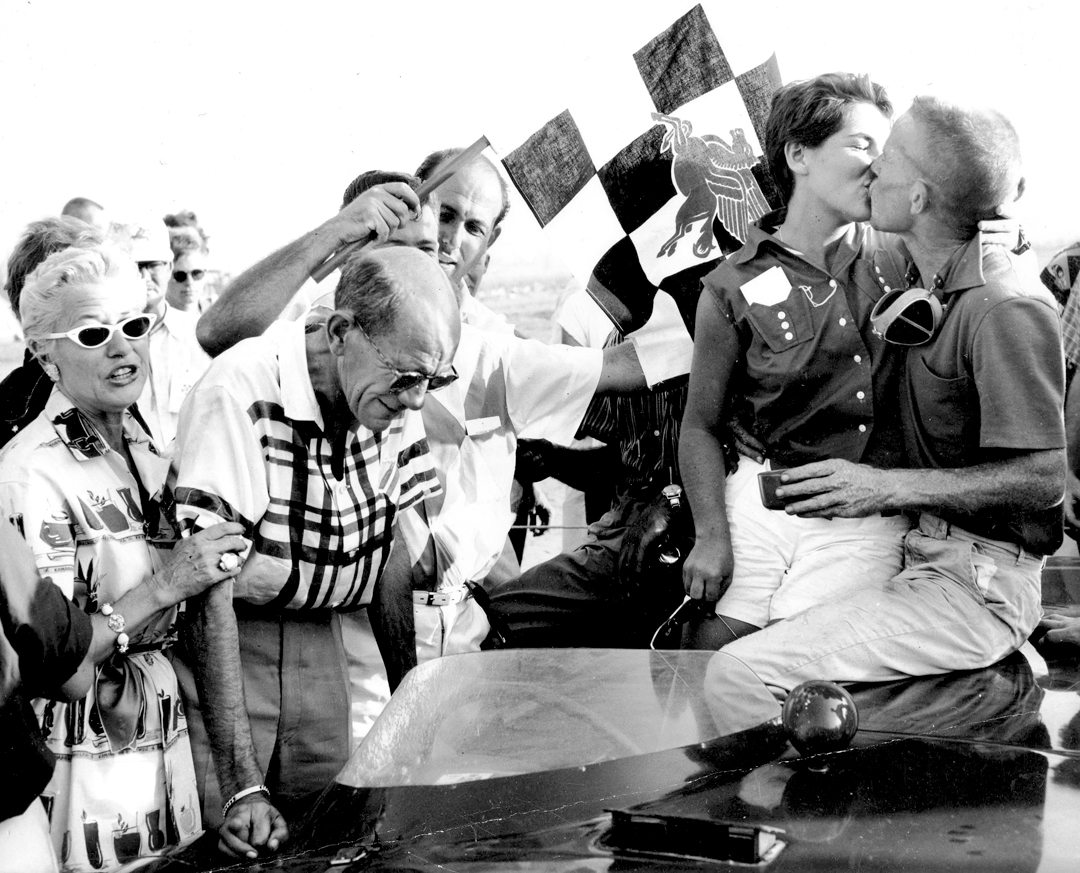
On October 21, 1956, at Pomona, Richie was contesting the lead in the under-1500-cc main event. I reported in the Sports Car Journal: “Ginther and Eschrich started a furious two-car duel which finally ended on the 20th lap when Eschrich spun out on Turn 2 and Ginther, who was following very closely, crashed into him.” This was one of the very few times I remember Richie getting into trouble.
In 1957, von Neumann graduated Richie to a 2-liter Ferrari Testa Rossa. But von Neumann always put himself in larger-displacement Ferraris and would finish ahead. In the very first event held at Riverside, Richie secured a ride from John Edgar in a 4.9 Ferrari and he won. In the first SCCA National at Riverside later that year, the best he could do in the same car was 5th behind Carroll Shelby, Dan Gurney, Masten Gregory, and Walt Hansgen.
In 1958, in addition to campaigning the 2-liter Testa Rossa, he drove a Ferrari Berlinetta in production car races, scoring a number of victories. By 1959, John and Eleanor von Neumann had divorced and Eleanor got the Ferrari distributorship and Ginther. She put Richie in faster Ferraris than had John, and Ginther won three main events. In 1960, he co-drove with Wolfgang von Trips in a works Ferrari in which they placed 2nd at the 1,000-km of Argentina. This started Richie on his Formula One career, first with Ferrari, then BRM and, finally, Honda.
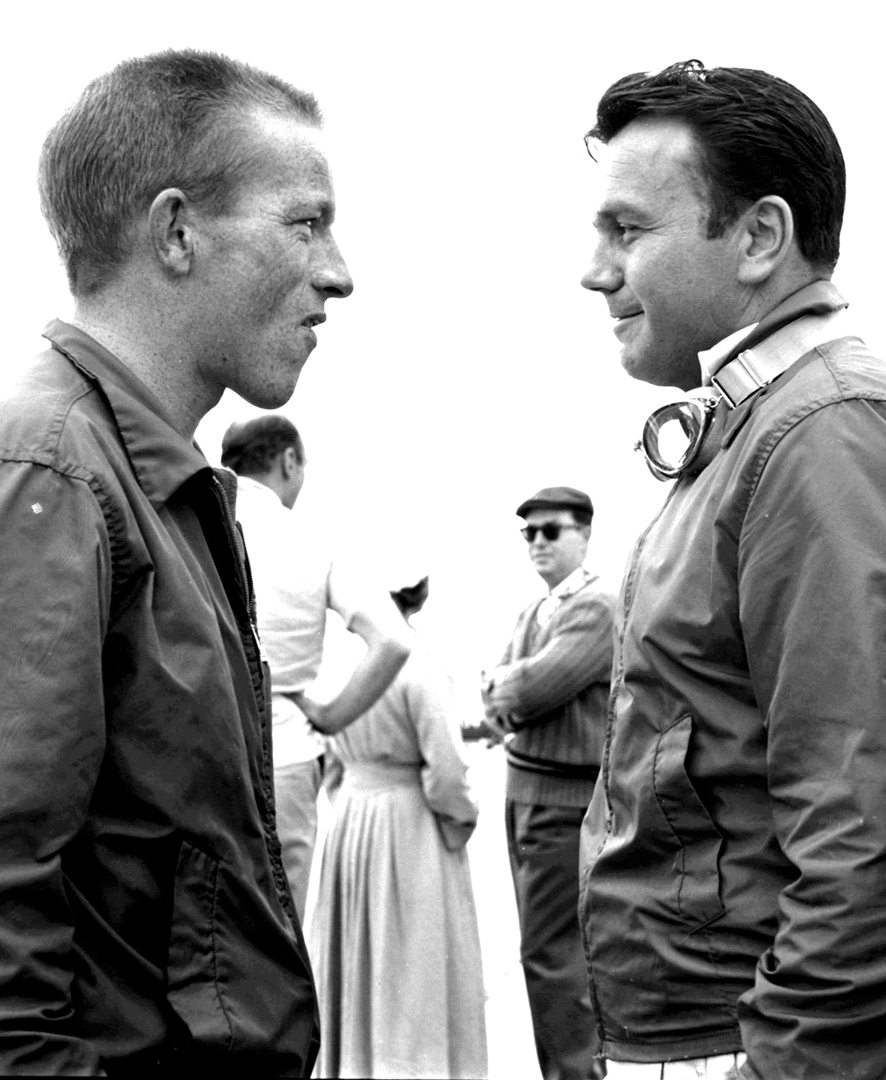
Richie’s first Formula One drive was for Ferrari at the 1960 Monaco GP. Later that year, he placed 2nd to his friend, Phil Hill, at Monza. In 1962, Ginther left Ferrari and joined the BRM team alongside Graham Hill. But at both Ferrari and BRM, Richie was not the lead driver. In 1965, he was invited to join the new Honda effort in testing and development as well as lead driver. The highlight for both Ginther and Honda came at Mexico in 1965 with a Grand Prix victory. It was the only win for both marque and driver. In 1966 at Monza, he crashed into a retaining wall breaking his collarbone while in the lead.
Richie’s Formula One record shows one win, 14 podiums, 107 championship points achieved in a total of 54 events. His last Formula One race was the 1967 Monaco. Driving a Dan Gurney All American Eagle, he attempted to qualify for the 1967 Indy 500. A fuel line broke, spraying methanol down his back. At that point, Ginther decided he had had enough of racing and walked away.
While on a trip to Europe for a BRM reunion, he experienced heart failure and died in France in 1989. When we got word that Richie had died, a group of us held a wake at the Proud Bird restaurant near Los Angeles Airport. Quite a few of his friends were there. I was surprised that Pete Lovely flew all the way down from Tacoma. The Proud Bird combines a restaurant and aircraft museum with many full-size, mostly WWII, replicas on display. The venue was appropriate due to Richie’s Korean Conflict service in the Air Force.


